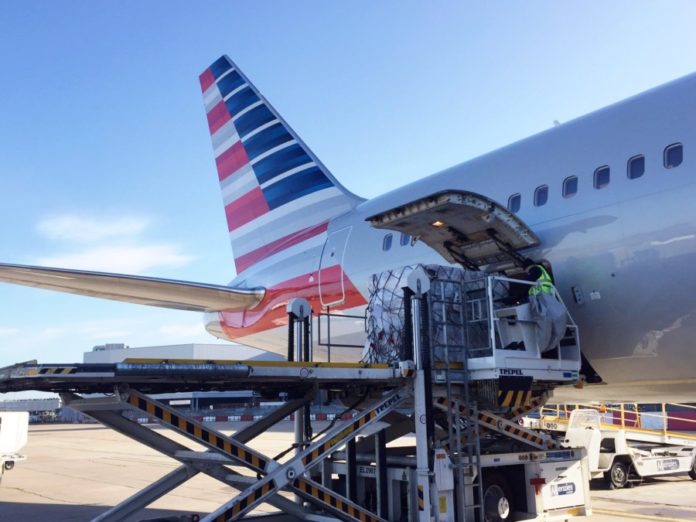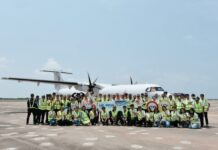

The air cargo market has experienced a series of ups and downs throughout 2022, as the post-Covid rebound was affected by geopolitical tensions, weakening global demand and supply chain challenges. In the latest figures released by the International Air Transport Association (IATA) back in September, carriers in North America posted a 6% decrease in cargo volumes in September 2022 compared to the same month in 2021. This marked a decline of 3.4% in performance compared to August.
With that backdrop, exhibitors from around the globe gathered last week in Miami – a key gateway between North and South America – for the industry’s largest trade show of the year. Despite the environment surrounding the sector, air cargo forum (ACF) Miami and transport logistic Americas had a palpable buzz of activity, as people throughout the logistics network mixed again.
While attendees held discussions on the issues facing the industry, as well as opportunities presented by digitalisation and sustainability, business negotiations were taking place throughout the venue. Whether in the road, rail, sea or air sector, companies from all elements of the supply chain were clearly keen to seize on the opportunity of a world that is opening up again.
Read more: American Airlines Cargo extends its transatlantic network this winter
The US Market
Being based in the Sunshine State, the exhibition inevitably attracted a large array of US-based companies, keen to discuss their plans for the future and how their operations have adapted since attendees last had the chance to meet at an event of this scale.
In recent years, airlines in the US, and abroad, have shown an increased interest in cargo operations, in part powered by the opportunities that emerged during Covid and the need to find alternative ways to keep companies that were suddenly left without passenger traffic financially afloat.
American Airlines expects the company’s fourth-quarter total cargo revenue to be 11% to 13% higher compared with the fourth quarter of 2019, producing an operating margin of between 5.5% and 7.5%. For the first nine months of the 2022 financial year, United Airlines moved nearly 250 million pounds of cargo, reporting an operating revenue of $12.9 billion, marking a 13% increase from 2019. The United Postal Service reported that, in the third quarter of 2022, consolidating operating profit was $3.1 billion, up 7.5% compared to the same period of 2021 and up 6% on an adjusted basis.
Even with the drop in demand being seen at the moment, which has put the airfreight market under pressure, there is still a clear financial opportunity in ensuring that airlines offer a strong slate of cargo services.
Infrastructure challenges
In October, following a survey of 400 stakeholders, the Airforwarders Association (AfA), along with the National Customs Brokers and Forwarders Association of America (NCBFAA) called for a state or federal-backed ‘air cargo support fund’ to tackle the infrastructure crisis faced by the industry.
Warning that the US airfreight sector is facing serious challenges, the survey identified how airports are struggling to keep up with surging levels of cargo, as many find they are close to capacity or don’t have adequate facilities. If left unaddressed, AfA outlined how there could be severe impacts on the economy and jobs throughout the country.
Because of revenue shortfalls over the past two years, the money currently allocated through the Infrastructure Act is expected to go towards passengers, security and safety, meaning there will be insufficient funds to sustain air cargo operations. That’s why both groups believe additional funding is urgently needed if jobs are to be protected and supply chain disruptions are to be avoided.
Read more: New airport terminal in New Jersey operated by Munich Airport subsidiary
Across the border
Looking north, it’s clear that there is potential in the region based on the flurry of expansion that is visible in Canada. Among those looking to secure a large slice of a growing market, Air Canada Cargo and WestJet were both prominently located on stands at ACF Miami, showcasing their respective plans.
WestJet Cargo, launched to meet the strong demand of the Canadian market, recently committed to the airfreight market by announcing a partnership with GTA. At the time, Kirsten De Bruin, WestJet’s Executive Vice President of Cargo, was open about her vision for a “bright future” as the company “enters a pivotal moment of competitive expansion.” In April, the company took a step into the freighter market, welcoming the first of four B737-800 Boeing Converted Freighters (BCFs), with plans to potentially further grow the fleet down the line. The proposal will see the Canadian cargo company work to meet the “larger scale needs of Canadian businesses, freight forwarders, shippers and individual customers.”
Air Canada Cargo is showing no signs of slowing down, as it recently expanded its network, fleet and service offering, taking delivery of its third 767 freighter and launching its specialised service for equine transportation. By the end of next year, Air Canada Cargo expects to grow to a total of seven 767 cargo aircraft, with two 777 planes due for delivery in 2024. While the Canadian market is currently a strong area for traffic, Air Canada Cargo’s top team see opportunities further afield in Europe, Latin America and the US.










